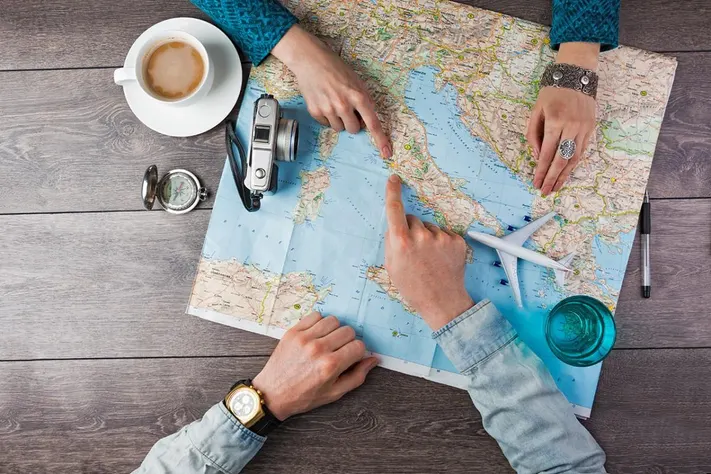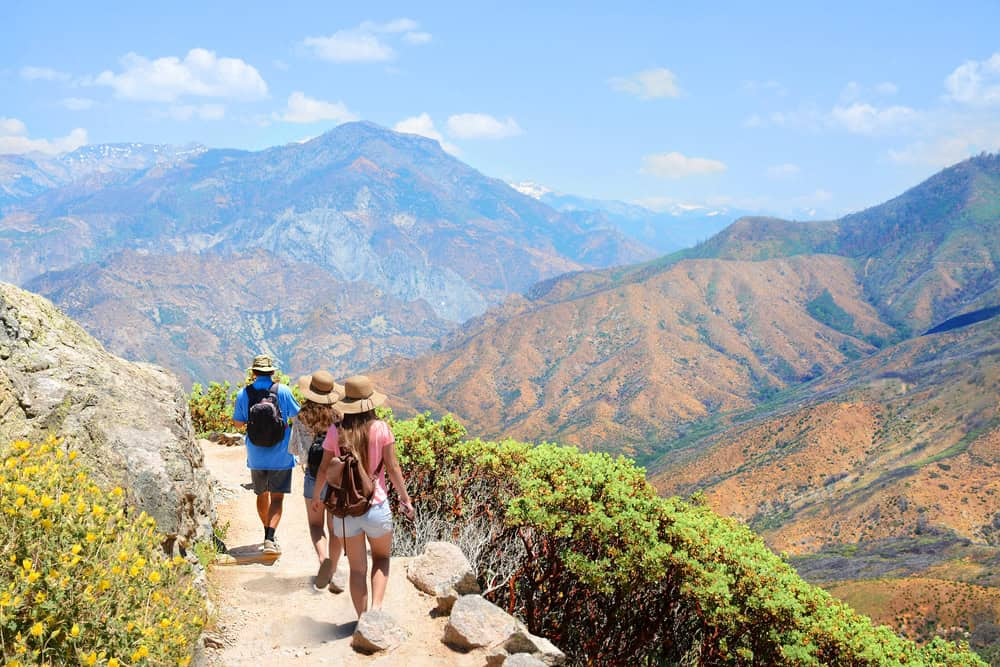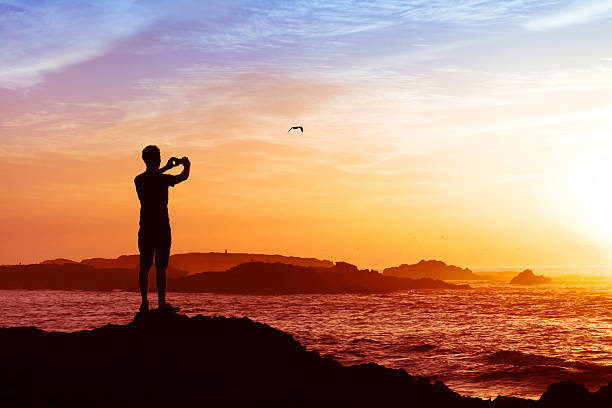Solo adventure travel is a thrilling and rewarding experience that allows you to explore new places, meet new people, and discover more about yourself. Whether you’re trekking through the mountains, exploring ancient ruins, or simply immersing yourself in a new culture, solo adventure travel offers a sense of freedom and empowerment. However, traveling alone, especially in unfamiliar destinations, can also present challenges—most notably ensuring your safety while still making the most of your adventure.
In this article, we will explore some top tips to help you stay safe, have fun, and make the most of your solo adventure travel experience.
Key Takeaways
- Plan and Research: Knowledge is key—understand the destination, cultural norms, and safety tips.
- Pack Light: Carry only essentials to make your journey smoother.
- Stay Safe: Trust your instincts, be aware of your surroundings, and stay connected with loved ones.
- Stay Healthy: Take care of your body with proper hydration, nutrition, and physical preparation.
- Embrace the Freedom: Solo travel offers an unparalleled sense of freedom—enjoy the adventure and make it your own.
1. Research Your Destination Thoroughly

Before embarking on your solo adventure, take the time to thoroughly research your destination. Knowing the ins and outs of where you’ll be traveling can help you stay safe, plan ahead, and make better decisions while on the road.
- Safety: Learn about the safety situation in your chosen destination, including the areas you should avoid. Websites like the U.S. Department of State, travel forums, and local blogs are great sources of information on potential risks.
- Cultural Awareness: Understanding the culture, language, customs, and local etiquette of the place you’re visiting will help you blend in and avoid accidentally offending someone. It can also help you make new connections and show respect to locals.
- Transportation: Research transportation options, including how to get from the airport to your accommodation, how safe local transport is, and whether you need to rent a vehicle.
- Weather and Terrain: If you’re going on an outdoor adventure, knowing what kind of weather and terrain to expect will help you prepare appropriately. Always check weather forecasts and pack accordingly.
2. Pack Light and Smart
Packing light is one of the best ways to ensure a smoother solo adventure. Not only will it make it easier for you to move around, but it will also allow you to be more flexible and spontaneous in your plans. When traveling alone, you don’t have someone to share the load with, so it’s best to carry only the essentials.
- Essential Gear: Invest in quality, lightweight gear for your adventure—whether it’s a sturdy backpack, lightweight sleeping bag, or comfortable hiking boots. Look for multi-purpose items that can serve multiple functions.
- Minimal Clothing: Pack clothes that can easily mix and match. Stick to versatile, weather-appropriate clothing that can be layered if necessary.
- Travel Essentials: Don’t forget important documents such as your passport, visas (if required), health insurance card, and any necessary permits for activities. Keep copies of these documents in case of an emergency.
- Electronics: Bring a portable charger and a backup power bank for your phone or camera. Having access to maps, booking apps, and emergency contacts can be invaluable while traveling solo.
3. Stay Connected

While solo adventure travel offers the thrill of independence, it’s still important to stay connected with family or friends back home, as well as with fellow travelers along the way. Communication is key when it comes to both safety and staying social during your trip.
- Check-In Regularly: Let someone you trust know your itinerary and check in with them regularly to keep them updated on your whereabouts. Consider using apps like WhatsApp or Messenger to send quick updates, especially if you’re traveling in remote areas.
- Emergency Contacts: Always have a list of emergency contacts, including the local embassy or consulate, a local emergency number, and the contact information of any hostels, hotels, or organizations you’re using.
- Offline Maps and Information: Download offline maps and travel apps that work without a Wi-Fi connection. This will come in handy if you find yourself without internet access in remote areas.
- Local SIM or Portable Wi-Fi: Consider purchasing a local SIM card or portable Wi-Fi device to stay connected without incurring high roaming charges.
4. Trust Your Instincts and Stay Aware
Solo adventure travel often places you in unfamiliar situations where your instincts can be your best ally. Pay attention to your surroundings, and trust your gut feelings when something doesn’t feel right.
- Stay Alert: Always be aware of your environment, especially when you’re in busy public places or unfamiliar areas. Keep your valuables secure, use money belts, and avoid carrying everything in one bag.
- Blend In: Try to avoid looking too “touristy” as this could make you a target for scams or theft. Keep a low profile and avoid drawing attention to yourself, especially in unfamiliar or high-risk areas.
- Know the Local Scams: Every destination has its share of scams aimed at tourists. Do some research to learn about common scams in your destination and how to avoid them. Always stay cautious, especially when approached by strangers offering unsolicited help.
- Trust Your Instincts: If something doesn’t feel right—whether it’s a situation, a person, or a place—don’t hesitate to walk away. Your safety should always come first.
5. Stay Healthy and Fit

Adventure travel can sometimes be physically demanding, so it’s important to stay healthy and fit before and during your trip. By preparing your body for physical challenges and staying on top of your health, you can ensure that you have the energy and stamina to make the most of your solo adventure.
- Physical Preparation: If you’re planning a hiking, biking, or outdoor adventure, consider working out in advance. Strengthen your muscles and cardiovascular system to help you handle more strenuous activities.
- Stay Hydrated: Drink plenty of water, especially in hot climates or when engaging in physical activities. Dehydration can cause fatigue, dizziness, and discomfort.
- Healthy Eating: While traveling solo, it can be tempting to indulge in unhealthy food, but maintaining a balanced diet will keep your energy up and help you stay focused.
- Pack a First-Aid Kit: Carry a basic first-aid kit with essential supplies like bandages, pain relievers, antiseptics, and any necessary prescription medications. Knowing how to handle small injuries or illnesses can help prevent a minor issue from becoming a major problem.
6. Embrace the Solo Experience
One of the greatest benefits of solo adventure travel is the ability to fully immerse yourself in the experience without the distractions of others. Embrace the solitude, take time to reflect, and enjoy the freedom to explore at your own pace.
- Meet Other Travelers: Solo travel offers the opportunity to meet new people along the way. Stay in hostels, join group activities, or attend local events where you can connect with other like-minded travelers.
- Be Open-Minded: Solo travel provides a chance to step out of your comfort zone, so embrace new experiences and be open to trying things you might not have considered in a group setting.
- Mindful Exploration: Take time to appreciate the beauty of your surroundings. Whether you’re in a remote jungle or an urban city, there’s always something new to discover. Solo travel allows you to engage with the environment in a deeply personal and meaningful way.
7. Know How to Handle Emergencies
While we all hope our solo adventures go smoothly, it’s important to be prepared for emergencies. Knowing what to do in an emergency can make all the difference in staying safe.
- Know the Local Emergency Numbers: Research and memorize local emergency numbers in your destination. In some countries, the emergency numbers may be different than what you’re used to at home.
- Have a Backup Plan: In case something goes wrong—whether it’s a missed flight, health issues, or a lost passport—have a backup plan in place. This includes having copies of important documents, knowing where your nearest embassy is, and having an emergency fund accessible.
- Travel Insurance: Consider purchasing travel insurance that covers medical expenses, cancellations, lost baggage, and other emergencies. It’s always better to be prepared in case something unexpected happens.
8. Choose the Right Accommodation
Your choice of accommodation plays a huge role in shaping your solo adventure. It’s crucial to select places where you feel comfortable and secure.
- Hostels and Guesthouses: These are great for solo travelers because they often offer a sense of community, where you can meet fellow adventurers. Many hostels organize tours or social events where you can join group activities and meet people easily. It’s also helpful for budgeting since hostels are generally more affordable.
- Homestays: Staying with a local family offers an authentic experience of the culture and allows you to connect with locals. This can give you insights that you may not get from traditional hotels or resorts.
- Boutique Hotels: For those who prefer more privacy and comfort, boutique hotels offer a blend of local charm and more personal service. Look for ones with a smaller guest count, where you can get the personal attention that larger, more impersonal hotels can lack.
- Camping or Glamping: For nature lovers, camping or glamping (glamorous camping) can be an amazing solo adventure. Whether you’re pitching your own tent in the wild or staying in a luxurious tented setup, the experience will let you connect deeply with nature and embrace the simplicity of life.
9. Learn a Few Words in the Local Language

One of the biggest benefits of solo adventure travel is the opportunity to immerse yourself in a different culture. However, language barriers can sometimes create difficulties, especially when you’re on your own.
- Basic Phrases: Learn a few essential phrases in the local language such as “hello,” “thank you,” “please,” “where is…,” and “how much is this?” These simple words can go a long way in building rapport with locals.
- Language Apps: Apps like Duolingo, Babbel, or Google Translate can help you learn the basics of a language or translate when you need assistance.
- Non-Verbal Communication: Be prepared to use hand gestures, facial expressions, and body language to communicate when you don’t have a strong grasp of the local language. Most people appreciate the effort you make to understand them, even if the communication is non-verbal.
10. Keep Your Valuables Secure
When traveling solo, especially in unfamiliar places, your valuables can make you vulnerable to theft or loss. Here are some strategies to keep your belongings safe:
- Use a Money Belt or Hidden Pouch: Money belts or neck pouches can be worn underneath your clothes to store money, credit cards, passports, and other valuables. This will keep them out of sight and more secure than in a regular wallet or purse.
- Lock Your Bags: Use travel locks on your luggage to make it more difficult for anyone to tamper with your belongings. Additionally, locking your bag in place when you’re in public spaces like bus stations or airports can deter potential thieves.
- Leave Some Things Behind: Avoid carrying unnecessary valuables such as expensive jewelry or extra credit cards. Keep a photocopy of important documents (passport, visa, travel insurance) in a separate location, like a safe at your accommodation or in a different part of your bag.
- Keep Technology Safe: If you bring electronic devices, such as your smartphone, laptop, or camera, always keep them within your sight. A small, anti-theft backpack or cross-body bag with hidden zippers can make it more difficult for someone to swipe your devices when you’re distracted.
11. Embrace Slow Travel

Solo adventure travel offers the perfect opportunity for slow travel. Instead of rushing through a long list of activities or destinations, take the time to immerse yourself in the local culture, landscapes, and experiences. Slow travel allows you to appreciate the details, learn more about a place, and connect with people in a deeper way.
- Stay Longer in One Place: Instead of hopping from one city to another, stay longer in one place. Spend time walking through neighborhoods, chatting with locals, or participating in local customs or traditions.
- Explore Off-the-Beaten-Path Locations: Sometimes the best experiences are found away from the tourist crowds. Consider visiting smaller villages, nature reserves, or hiking trails that might not appear in typical tourist guides.
- Focus on Mindfulness: Take the time to observe and reflect on your surroundings. Whether it’s a quiet moment on a mountain top or a visit to a local cafe, practicing mindfulness will help you feel more connected to your adventure.
12. Know How to Handle Solo Adventure Challenges
Every solo traveler will encounter challenges, from unexpected weather to delayed transportation. How you handle these challenges will determine the quality of your experience. Here’s how to stay calm and make the most of tough situations:
- Stay Flexible: Things won’t always go according to plan. Flights can get delayed, weather may disrupt your hiking trip, or your planned activity may not be available. Learn to embrace the unexpected, as it often leads to unique experiences and new opportunities.
- Manage Stress: If you encounter a stressful situation, take a deep breath and focus on the next step. If you feel overwhelmed, break the problem into smaller, manageable pieces. Find a quiet spot, meditate, or practice some simple breathing exercises.
- Adapt and Learn: Solo adventurers often have to solve problems on the fly, which is one of the joys of the experience. For example, you may find yourself navigating unfamiliar public transportation or figuring out how to communicate in a language you don’t speak. Each problem you solve builds confidence and provides a valuable learning opportunity.
13. Solo Adventure Travel is About Empowerment
One of the key aspects of traveling solo is empowerment. Solo travel gives you the opportunity to build self-reliance and confidence. Every challenge you face on the road and every new place you explore allows you to discover strengths and capabilities you might not have realized before.
- Personal Growth: Traveling on your own forces you to step outside your comfort zone, which can lead to substantial personal growth. You’ll gain a deeper understanding of yourself, your boundaries, and your ability to handle unexpected situations.
- Independence: Solo adventure travel teaches independence, decision-making, and self-sufficiency. Whether it’s choosing where to go, what to eat, or how to navigate a foreign city, you’ll become more comfortable making decisions on your own.
- Freedom: You’ll have the freedom to do what you want, when you want. If you decide to skip a museum visit to go for a hike, or if you feel like changing your plans entirely, there’s no one else to accommodate or compromise with. This level of freedom is unique to solo adventure travel and something that will stay with you long after the trip ends.
14. Capture the Moment, But Be Present

While it’s great to document your travels through photos or videos, don’t let it distract you from truly being present in the moment. Sometimes the best memories come from simply experiencing something with all your senses—whether it’s watching a sunset, listening to the sounds of nature, or enjoying a local meal.
- Take Photos Mindfully: Capture memories, but don’t spend all your time behind a camera. Allow yourself to experience the moment in real-time.
- Journaling: Writing down your thoughts, experiences, and reflections during your solo travels can be an invaluable part of the process. It helps you reflect, process emotions, and document the journey in a meaningful way.
Also Read: What Is Adventure Travel and How Can It Transform Your Journey?
Conclusion
Solo adventure travel is a unique and empowering way to explore the world. While it comes with its challenges, proper preparation and a mindful approach to safety can ensure you have a fun and rewarding experience. By researching your destination, staying connected, being aware of your surroundings, and embracing the freedom of solo travel, you can make the most of your adventure while staying safe and healthy. So pack your bag, trust your instincts, and enjoy the incredible experiences that come with traveling solo. The world is waiting for you to explore it!
FAQs
1. Is it safe to travel alone on an adventure trip?
Yes, solo adventure travel can be safe as long as you take necessary precautions. Research your destination, stay aware of your surroundings, keep emergency contacts, and trust your instincts. Choosing safe accommodations, staying in well-populated areas, and avoiding risky situations also enhance safety while traveling solo.
2. How do I meet people while traveling alone?
Meeting new people is one of the perks of solo travel. Consider staying in hostels, attending group tours or activities, and joining local events. Social apps like Meetup or Couchsurfing are also great platforms to connect with other travelers and locals. Simply being open and approachable will naturally lead to new connections.
3. What if I get lost or face an emergency while traveling alone?
If you get lost or face an emergency, stay calm. Always have offline maps downloaded and keep emergency contacts on hand. Knowing the local emergency number, having travel insurance, and staying in touch with someone at home can help you handle any situation. Preparing ahead with a first-aid kit and backup documents will give you peace of mind.
4. How do I choose the right solo adventure destination?
The best solo adventure destination depends on your interests and comfort level. Consider starting with places that are known for being safe and welcoming to solo travelers. Research the safety, transportation options, and accessibility of outdoor activities. Popular solo adventure destinations include national parks, hiking trails, and cultural cities with a vibrant solo traveler community.
5. What are the best safety tips for solo travelers?
- Stay aware of your surroundings and avoid distractions.
- Keep valuables in a money belt or hidden pouch.
- Trust your instincts if something doesn’t feel right.
- Always keep your family or friends informed about your itinerary.
- Use secure payment methods and avoid withdrawing large sums of cash in unfamiliar areas.
- Learn basic phrases of the local language to communicate in case of emergencies.
6. What should I pack for a solo adventure trip?
Pack light and bring only essentials like clothing appropriate for the weather, durable shoes, a first-aid kit, and any necessary electronics like a phone, power bank, and camera. Include a water bottle, a journal for reflection, and a lock for your luggage. Additionally, keep backup copies of important documents such as your passport, insurance, and travel tickets.
7. Is solo adventure travel suitable for women?
Absolutely! Solo adventure travel is perfect for women looking for self-discovery, independence, and empowerment. Many destinations are safe for women traveling alone, especially in places that are known for being solo traveler-friendly. To stay safe, plan your trip well, choose reputable accommodations, and stay connected with family or friends. Women often find solo travel to be an empowering experience that builds confidence and personal growth.
